Virginia, with its rolling hills, sprawling forests, and rugged mountain ranges, has long been a playground for those seeking adventure off the beaten path. While modern off-roading may conjure images of lifted trucks, winches, and aggressive tires, its roots in Virginia stretch back decades, evolving alongside the culture, technology, and landscapes that make the state a unique off-road destination today.
Early Beginnings: From Farm Roads to Muddy Trails
Off-roading in Virginia didn’t start with specialized vehicles or organized clubs—it began with necessity. In the early 20th century, rural Virginians often had to traverse muddy farm roads, dense forests, and river crossings to reach neighboring towns or transport crops. Vehicles like the Ford Model T and early Jeeps were not designed for recreation but became the workhorses that allowed people to navigate Virginia’s challenging terrain.
During this period, off-road travel was more about survival and practicality than sport. However, these experiences laid the groundwork for a culture that would eventually embrace off-roading as a recreational pursuit. Residents became intimately familiar with the landscape, learning which hills could be climbed, which river crossings were safe, and how to repair vehicles in the field.

The Jeep Revolution and Military Influence
The 1940s marked a turning point for off-roading, both nationally and in Virginia. World War II introduced the Jeep, a vehicle built for durability and rugged terrain. Soldiers returning home brought with them an appreciation for off-road capability, and Jeeps quickly found their way into civilian life. In Virginia, where rural communities still relied heavily on personal vehicles to navigate forests, mountains, and backroads, the Jeep became iconic.
The post-war years also saw a surge in recreational interest. Veterans who had experienced off-road challenges abroad began to seek similar thrills closer to home. They explored trails in the Blue Ridge Mountains, the Allegheny Highlands, and the Piedmont, turning practical driving routes into recreational adventures.
The Rise of Off-Road Clubs in Virginia
By the 1960s and 1970s, off-roading began to formalize as a sport and hobby. Local clubs started to form, often centered around Jeep enthusiasts or four-wheel-drive aficionados. These clubs provided a way for like-minded individuals to share tips, organize events, and advocate for trail access.
One of the earliest examples in Virginia was the Virginia Jeepers Club, which organized trail rides and weekend meetups. Such clubs often doubled as social communities, where families could gather and swap stories about their off-road adventures. Members quickly realized that off-roading wasn’t just about vehicles—it was about exploration, camaraderie, and a love of the outdoors.
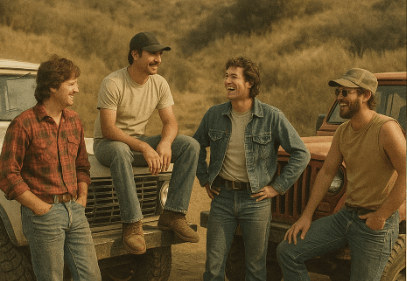
Key Trails and Iconic Locations
Several areas in Virginia have become legendary among off-roaders, each with its own history:
- The Blue Ridge Mountains: Stretching along Virginia’s western border, the Blue Ridge offers steep inclines, rocky paths, and breathtaking views. Trails like Ridge Road and Bobblets Gap have been favorites for decades, challenging drivers while showcasing the natural beauty of the region.
- The Jefferson National Forest: In the mid-20th century, off-roaders began exploring backcountry roads that had once been logging or fire access paths. Over time, these trails became unofficial routes for weekend adventures.
- The Shenandoah Valley: While much of the valley’s farmland remained off-limits, old logging roads and rural backroads attracted those seeking moderate trails suitable for all-terrain vehicles.
These areas didn’t just serve as playgrounds—they became a testing ground for vehicles and a training ground for off-road techniques that are still taught in clubs today.
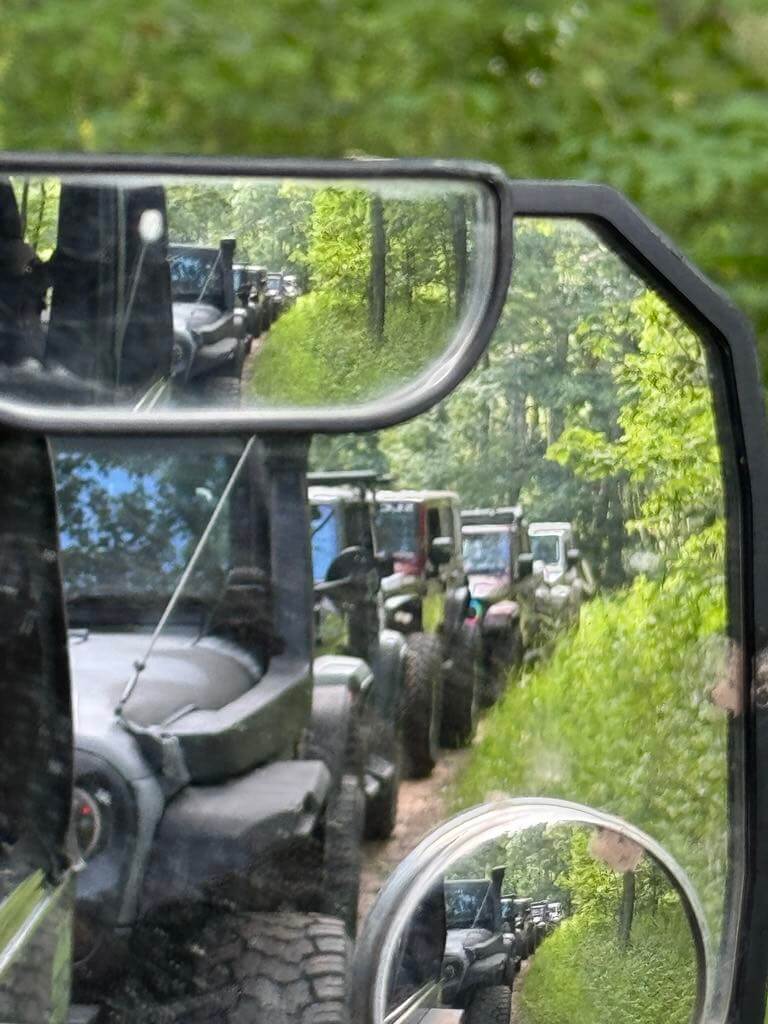
Vehicle Evolution and Off-Road Technology
As the off-roading community grew, so did the vehicles themselves. In the 1980s and 1990s, manufacturers began producing SUVs and trucks specifically geared for off-road performance. The Toyota 4Runner, Nissan Xterra, and Suzuki Jimny became popular in Virginia, offering more ground clearance, improved suspension, and advanced traction systems.
This era also saw the rise of aftermarket modifications. Lift kits, heavy-duty winches, skid plates, and specialized tires became common among enthusiasts. Virginia off-roaders learned to adapt their vehicles to the state’s diverse terrain, whether navigating muddy Piedmont tracks or rocky Blue Ridge ascents.

Off-Roading Culture in Virginia
Off-roading in Virginia isn’t just a hobby—it’s a culture. Early clubs and trail rides helped establish traditions still seen today:
- Trail Etiquette: Sharing trails responsibly, helping stuck vehicles, and preserving the environment have always been central to the community.
- Competitions and Events: From small club challenges to regional rock-crawling competitions, Virginians embraced the thrill of testing skill and strategy.
- Family Involvement: Off-roading has long been a family-friendly activity, encouraging multi-generational participation and passing down knowledge of both vehicles and terrain.
These cultural aspects created a tight-knit community that balanced adventure with responsibility, shaping the state’s modern off-road scene.
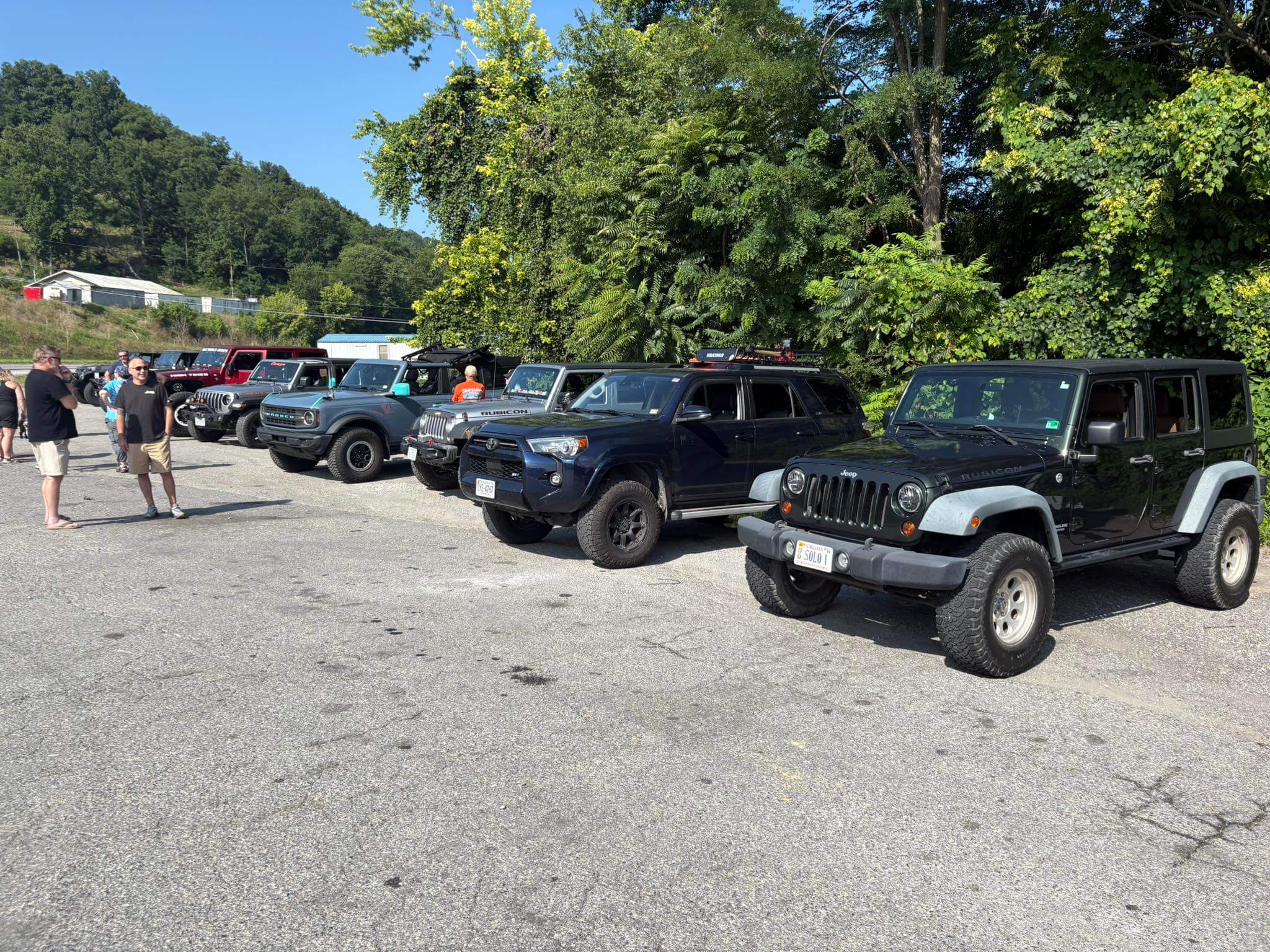
Environmental Awareness and Ethics
As the off-roading community matured, environmental awareness became increasingly important. Virginia’s landscapes are fragile; erosion, soil compaction, and damage to plant life are genuine concerns. Trail advocacy groups and clubs began promoting “Leave No Trace” principles, organizing volunteer trail maintenance, and educating newcomers on sustainable practices.
Today, Virginia Off-Road is part of this tradition, helping to preserve trails while ensuring that future generations can enjoy the same adventures. Ethical off-roading isn’t just a suggestion—it’s a legacy of respect for both nature and community.
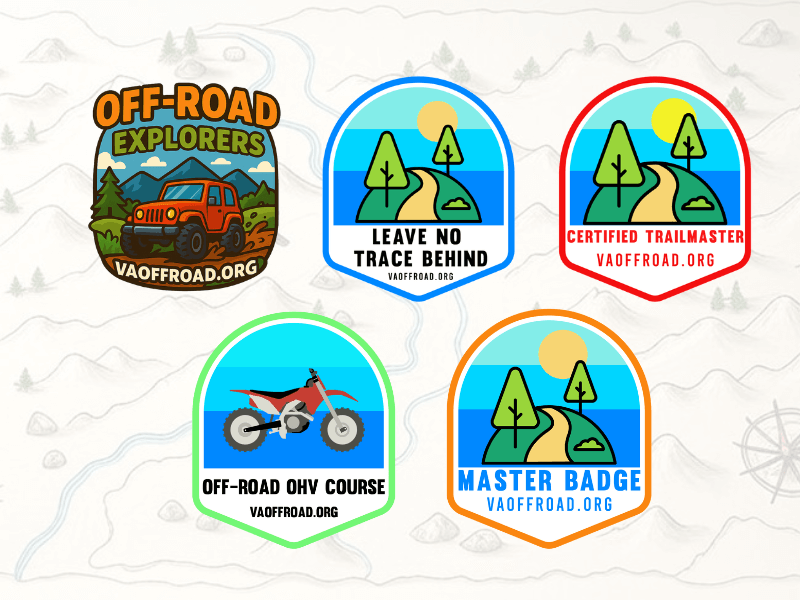
Modern Off-Roading in Virginia
In the 21st century, off-roading in Virginia has evolved into a highly organized, well-supported recreational activity. The internet and social media allow enthusiasts to share trail maps, reviews, and experiences, fostering connections across the state. Local businesses cater to the off-road community, offering parts, rentals, and guided experiences.
Virginia Off-Road has played a significant role in this modern era, advocating for safe and responsible trail use, creating educational programs, and supporting events that bring together families, veterans, and enthusiasts of all backgrounds. Today, the state offers a mix of technical trails, scenic drives, and beginner-friendly routes, making off-roading accessible to everyone.
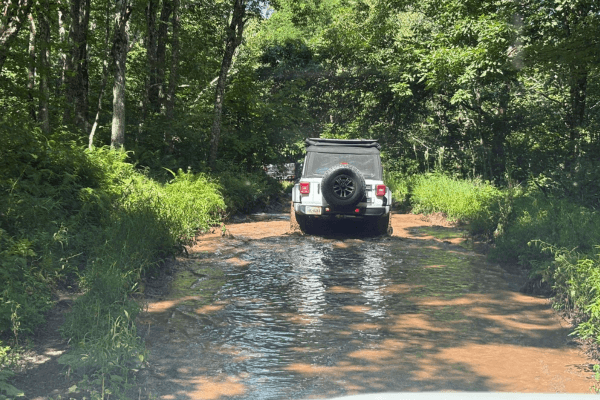
Off-Roading and Community Building
One of the most remarkable aspects of Virginia’s off-roading history is its impact on community. Clubs and events have consistently emphasized inclusivity, mentorship, and volunteerism. Families often participate together, teaching younger generations about vehicle handling, trail etiquette, and outdoor survival skills. Veterans find camaraderie and therapeutic engagement, while newcomers are welcomed with guidance and support.
This community-driven approach ensures that off-roading remains more than just a pastime—it’s a way to connect with the land and with each other, honoring decades of tradition while embracing the future.
The Future of Off-Roading in Virginia
Looking ahead, off-roading in Virginia is poised to continue growing, guided by technology, sustainability, and community engagement. Electric and hybrid off-road vehicles are beginning to appear on trails, offering quieter and more environmentally friendly alternatives. Trail advocacy efforts continue to expand, ensuring legal and safe access for all enthusiasts.
Virginia Off-Road is at the forefront of these efforts, combining historical knowledge with modern innovation. By preserving trails, educating drivers, and celebrating the culture, the organization helps ensure that off-roading in Virginia remains a cherished part of the state’s recreational landscape.

Conclusion
The history of off-roading in Virginia is a story of evolution—from muddy farm roads to modern, well-maintained trails, from necessity to sport, and from isolated adventurers to vibrant communities. It’s a history defined by vehicles, landscapes, and, most importantly, people.
Virginia’s mountains, valleys, and forests have tested the skills of countless off-roaders, inspiring a culture of respect, camaraderie, and adventure. As technology, ethics, and environmental awareness continue to shape the activity, the state’s off-road legacy remains strong, offering a rich tapestry of experiences for anyone willing to take the wheel and explore.
Off-roading in Virginia is more than just a hobby—it’s a tradition, a community, and a celebration of the state’s natural beauty. And the best part? The next chapter of this history is waiting to be written by you.

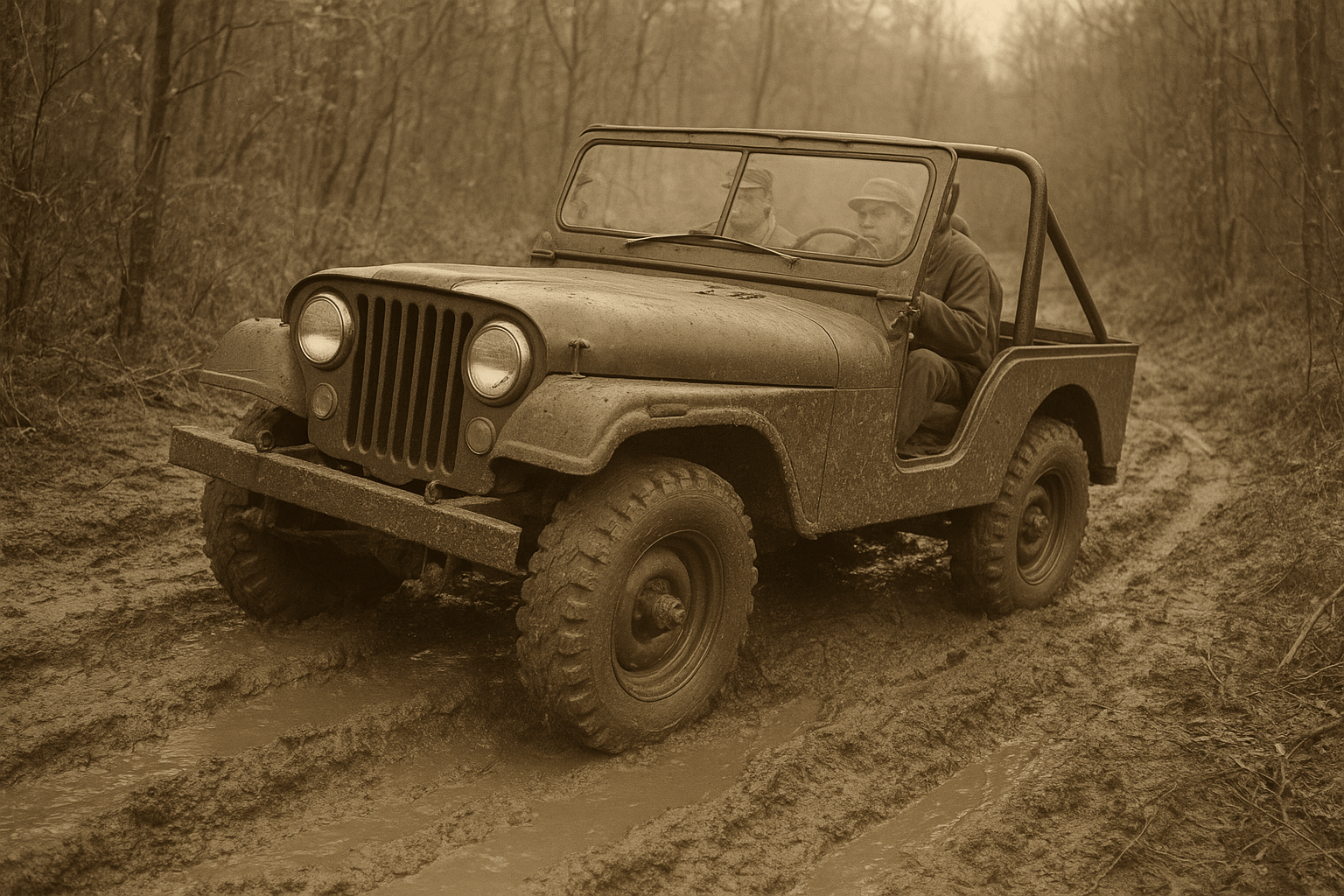


No responses yet